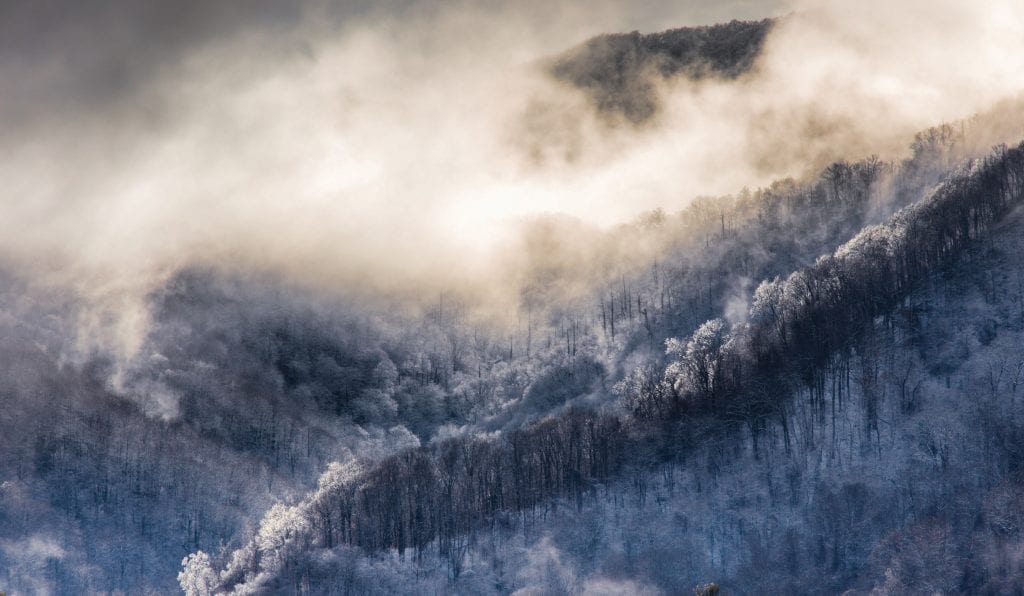“Icy Morning in Cades Cove” by Robin Conover Canon EOS 5D Mark IV, EF 100-400 mm fl4.5-5.6 L IS USM lens at 400 mm, ISO 200, fl13 at 1/400 second, Gitzo tripod
When I begin to compose a landscape — and most other images for that matter — I visualize it in my mind before I get my camera out of the bag. I take my time to observe and study the subject, organizing the image before I ever look through the viewfinder.
I watch the light, decide whether the photograph is going to work better as a horizontal or vertical image, search for the best angle to simplify the background and/or foreground and pick which lens to use. Though this process sometimes goes fairly quickly, at times it can take several minutes to hours to find the right spot to set down my tripod.
This self-editing process prior to shooting is a learned skill that helps you slow down, observe the surroundings and focus on your subject. Once I find what I think is the best location and composition, I get the camera out, choose the lens and attach it all to the tripod.
Then I look through the lens, scanning the edges of the image through the viewfinder, beginning in the upper right-hand corner. Moving my eye clockwise to each corner helps ensure that I only include what I want to be in the photograph and cuts out any clutter, stray limbs or other distractions I don’t want.
Luckily, I was in Cades Cove on this beautiful December morning after light snow and freezing fog during the night painted the ridges surrounding the cove in a monochromatic pallette. The scene was gray and overcast for about an hour before the sunlight began filtering through clouds, highlighting the ice-covered trees. As the fog began to lift from the valleys below, the scene came alive. The contrast of warm light in the fog and the cooler light in the shadows added another interesting element.
When I came across this scene, I quickly followed my process to find the right composition and begin shooting as the fog danced across the ridges in the warm sunlight. I chose a 400 mm lens because the ridges were quite a distance away and I wanted to focus on a small section where the sun and fog were the most interesting.
I composed this as a horizontal first and waited as the sunlight filtered in and out of the clouds. After several exposures, I changed the composition to a vertical to capture the image from both perspectives. As a photojournalist, you never know exactly how the image might be used, and shooting in both formats gives you more options. The vertical appears on our cover this month.
Refining your eye with some self-editing before you shoot will strengthen all of your compositions and help develop your photography style. Everyone sees the world differently. Capturing your unique view of it is the challenge.



